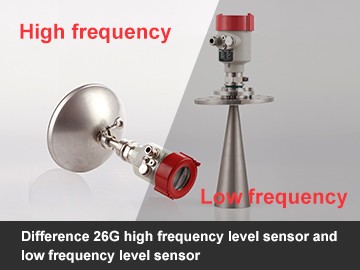Difference 26G high frequency level sensor and low frequency level sensor
With the popularity of 26G high frequency radar level sensor, radar level measurement tends to develop towards hf technology. Compared with the previous low-frequency radar level sensor, the advantages of the 26G high-frequency radar level sensor are more obvious. This is because the high frequency radar level sensor can not only be used in harsh working conditions, but also has a wide range of applications.
What are the advantages of 26G high frequency radar level sensor?
The main advantages of the 26G high frequency radar level sensor are its high energy and small transmitting beam Angle (the horn antenna with a diameter of 95 has a beam Angle of 8 degrees, while the horn antenna with a diameter of 246 has a beam Angle of only 15 degrees for the 6G low-pulse radar), as well as its small antenna size and high precision. When these advantages are used for radar to measure the bulk material location, the diffuse reflection strength of the radar wave is proportional to the size of the material. However, the low-frequency radar level sensor has lower frequency and longer wavelength, so its transmitted frequency wave is not easy to be diffuse reflected, and in the case of high dust, it will lead to multiple echo interference, and the noise is very large, so it cannot be used for solid powder level measurement.
By comparing the 26G high-frequency radar level sensor with the low-frequency radar level sensor, the high-frequency radar level sensor has a wider application range and is more suitable for harsh working conditions, while the low-frequency radar level sensor is suitable for small range and level measurement.






